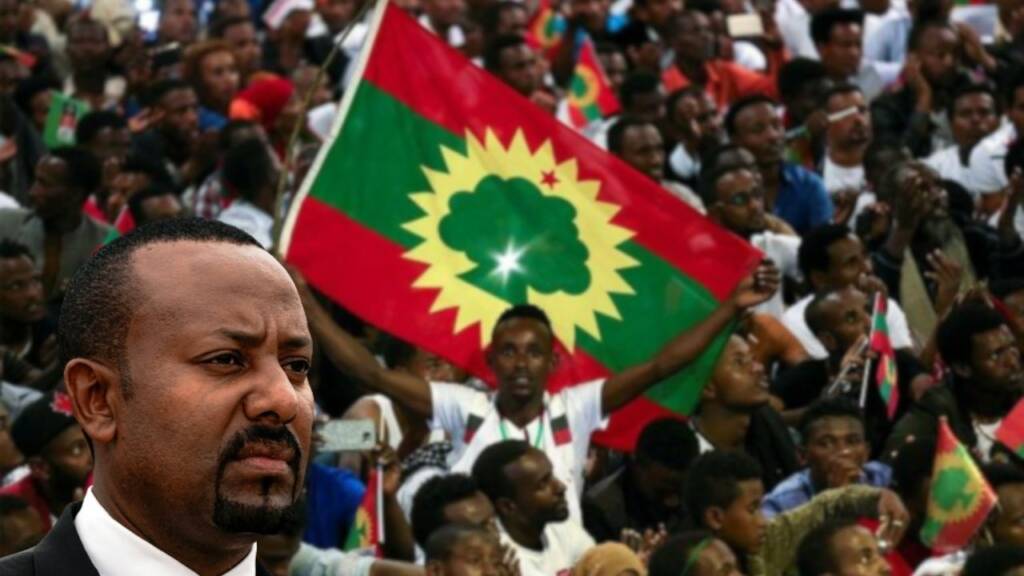After ravaging Ethiopia for nearly two years, the Tigray crisis has recently come to an end, and the violence has subsided, leading to hopes that the country can finally focus on rebuilding its economy and infrastructure. However, contrary to these expectations, as violence subsides in Tigray, Ethiopia’s Oromia conflict has flared up in recent times, raising fears of another crisis escalating in the East African country. Nonetheless, the Ethiopian government has learned from its past and is now taking preemptive measures to prevent the country from descending into another crisis just when it has overcome one.
The Oromia Conflict
In November 2020, an outbreak of violence in Ethiopia’s Tigray region gained global attention, leading to international pressure on Prime Minister Abiy Ahmed to negotiate with Tigrayan officials to halt the bloodshed. Since the signing of a peace deal on November 2, the war in Ethiopia’s northern Tigray has subsided, but another conflict is escalating in the country’s southern Oromia region.
Oromia is Ethiopia’s largest state, and the Oromo people have been protesting and advocating for self-determination. The Oromo constitute Ethiopia’s largest ethnic group, accounting for approximately 40% of the population.
Read More: It’s official, USA sponsored TPLF
Ethiopia is home to around 80 ethno-national groups, with the Amhara comprising about 27% of the population. Reports suggest that their language, culture, and political and economic power have dominated other ethno-national groups for almost 150 years. Conversely, the Oromo, the largest ethnic group, claim a history of oppression. According to reports, resentment has intensified under Prime Minister Abiy Ahmed, who is himself an Oromo. Oromo voices are underrepresented in the Ethiopian government, global systems, and media, and they claim they have been denied access to their country’s political, economic, and cultural resources.
Intensifying violence
According to analysts, the Oromo Liberation Army (OLA) rebels were previously limited to the fringes of western and southern Oromia. However, the security vacuum created by the Tigray war has allowed them to expand their long-running insurgency.
Reports suggest that the OLA primarily conducted small-scale hit-and-run operations, including bank raids, kidnappings, and targeted assassinations, to fund their activities. Nevertheless, the Oromia conflict has largely gone unnoticed outside of Ethiopia, as most of the world’s attention remains focused on the Tigray war.
Read More: After TPLF’s surrender, the West unleashes a new hound on Ethiopia
However, according to the Armed Conflict Location & Event Data Project (ACLED), a conflict monitoring group, Oromia has become Ethiopia’s “most volatile region” since the implementation of the Tigray Peace deal. Furthermore, violence is spreading to rural areas near the capital, Addis Ababa, and opposition leaders claim that the conflict is engulfing the entire Oromo nation. The UN’s aid coordination agency, OCHA, has also warned that the security situation is rapidly deteriorating, with hundreds of thousands of civilians displaced and essential services non-functional in some conflict-affected regions.
With the implementation of the Tigray Peace deal showing signs of progress, Oromia has morphed into Ethiopia’s “most volatile region”, according to ACLED, a conflict monitoring group. According to reports, frustrated Oromo lawmakers from Abiy’s ruling Prosperity Party have written a letter to the Prime Minister’s office and the speaker of the national parliament, demanding a peace deal similar to the one in Tigray.
Ethiopia edge toward talks with OLA
It appears that the Ethiopian government has finally taken positive action before it’s too late. There are indications that talks will take place. On March 28, Prime Minister Abiy Ahmed told parliament that a committee has been formed to negotiate with the Oromo Liberation Army (OLA), a militant group that claims to be fighting for greater Oromo autonomy in Ethiopia’s largest region.
Abiy acknowledged that the violence has caused “immense suffering” for the public in Western Oromia over the past five years and stated that the government is “deeply committed to resolving this conflict through peaceful means.” Meanwhile, the OLA has also expressed appreciation for this possibility. In response, the OLA stated that while some of the premier’s comments were misleading, there were “positive signs” that internationally mediated peace talks would take place.
Therefore, it is likely that an Oromia peace process could follow the successful late 2022 efforts to end large-scale fighting in Tigray. The OLA has expressed its willingness to negotiate, but only under the condition that talks are facilitated and mediated by a neutral third party. Last year, the U.S. initially facilitated secret federal-Tigray talks, which were then followed by formal negotiations led by the African Union, with Kenyan President Uhuru Kenyatta playing a key role.
Read More: TPLF might be preparing to stab a large dagger in Abiy Ahmed’s back
Thus, the Abiy government’s decision to initiate a dialogue is laudable as Ethiopia hopes to achieve peace. Although there may be disagreements, the formation of the committee and the OLA’s positive response are significant steps toward ending the conflict in Oromia. It also indicates that the Ethiopian government has learned from the Tigray crisis and has taken a crucial step toward paving the way for lasting peace in Ethiopia.
https://www.youtube.com/watch?v=qTkTTmsXpnE
